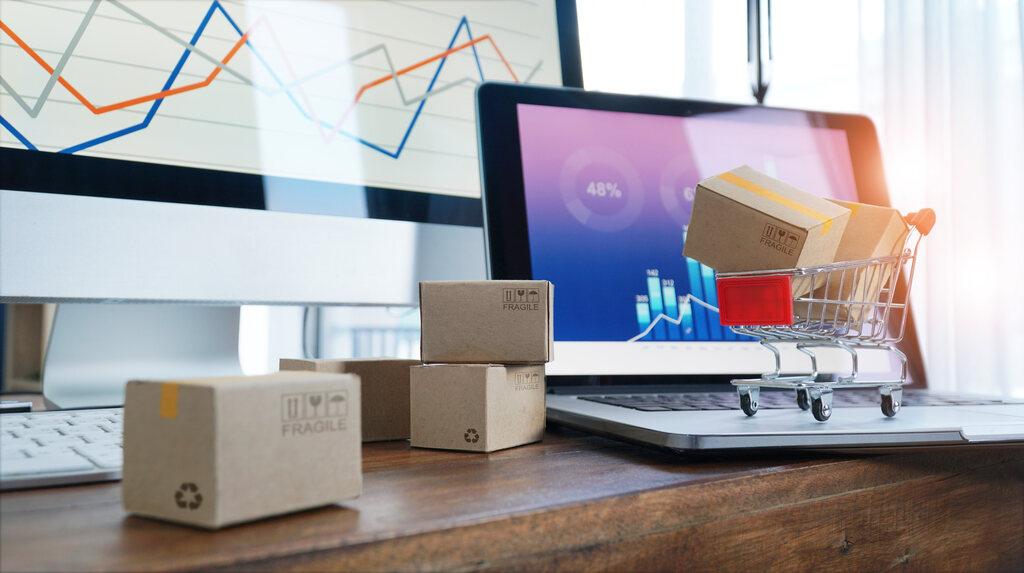Growing your ecommerce sales requires a multifaceted approach, and every detail can directly impact your results. It may seem like a difficult task, but with the right strategies, you can achieve the growth you’re aiming for.
When you understand your audience, optimize your website, and implement marketing campaigns aligned with your target customers, you’ll be on the right track to boost conversions and grow your online business.
How to Increase Ecommerce Sales
Below, we explore key strategies to achieve this goal.
Understanding Your Audience
Understanding your customers is the first step to a successful ecommerce sales strategy. Spending time researching your audience allows you to identify their goals, their needs, and the challenges they face in finding solutions.
Once you have a clear picture of your customer(s), you can build personalized offers, improve the shopping experience, and create more effective marketing campaigns to reach potential shoppers.
Identify Target Customers
Your target audience includes the shoppers most likely to purchase from your company - not just once, but on an ongoing basis. While it may be tempting to assume that your ideal customer base is a broad group based on age, location, or other demographics, identifying your target audience goes beyond just those basics. To build your target customer profile, consider these key factors:
- Pain Points and Needs: Identify the specific challenges or desires your products address for customers.
- Values and Interests: Understand what motivates your customers - sustainability, innovation, lifestyle preferences, etc. - and how your offerings align with their priorities.
- Shopping Behavior: Analyze patterns such as purchase frequency, average order value, and preferred product categories to understand how customers interact with your store.
- Price Sensitivity: Evaluate whether your customers prioritize affordability, premium quality, or value-for-money offerings when making purchasing decisions.
- Engagement Channels: Determine where your audience spends time online, such as social media platforms, email, or specific marketplaces.
You can use this information to build a profile of your most valuable customers and how they engage with your brand.
Utilize Analytics Tools
Analytics tools can provide insights into shopper behavior patterns as they search for products like yours, and when they visit your website.
Google Analytics (GA4)
Google Analytics, now GA4, is a powerful tool for understanding who is visiting your ecommerce store and how they interact with it. GA4 shows users key engagement metrics, from bounces to purchase completion. You can also use GA4 to identify key customer segments and conversion paths.
Built-in Ecommerce Analytics
Your ecommerce platform likely offers a built-in analytics tool that provides data on sales, order sources, customer retention, and product performance.
These tools include information tailored for ecommerce businesses, offering insights into customer lifetime value, repeat purchase rates, and high-performing products.
SEO Tools
SEO tools like Semrush, Ahrefs, and Moz analyze search trends, keyword performance, and competitor data. These tools offer insights into what potential customers are searching for online, helping ecommerce businesses refine their target audience by identifying high-performing keywords, search intent, and trending topics relevant to their products. These tools combine SEO, content marketing, and paid search data to identify target audiences that are actively searching for solutions.
Segmentation Strategies
Segmenting your audience based on factors like purchase behavior, interaction history, and preferences allows you to build specific marketing strategies that speak to the needs of each segment. Tailoring your marketing to a specific customer group has been shown to increase engagement rates, conversion rates, average order value, and customer lifetime value.
Some valuable customer segments to consider are:
- High Lifetime Value (LTV) Customers: This segment includes regular buyers with high average order values who engage with loyalty programs or premium offerings. To increase sales from this segment, enhance their shopping experience with VIP programs, personalized recommendations, and early access to new products or sales.
- Churn-Risk Customers: This segment includes previously active customers who haven’t purchased or interacted with your brand recently. Re-engage these customers with targeted email campaigns, exclusive discounts, or personalized incentives based on past purchases to increase sales.
- Discount Shoppers: Discount shoppers are price-sensitive customers who typically purchase during sales, or use coupons and promo codes. To increase sales from this segment, offer tiered discounts, flash sales, or loyalty points for purchases to maintain profitability while attracting repeat business.
- First-Time Buyers: New customers who have made one purchase but haven’t yet established brand loyalty present a significant opportunity for increased ecommerce revenue. Nurture them with welcome emails, limited-time offers on complementary products, or incentives for their next purchase.
- Product-Specific Enthusiasts: By creating segments of customers with a clear preference for specific product categories or collections (e.g., fitness gear, tech gadgets), you can tailor marketing campaigns around their favorite categories, highlight new arrivals, or cross-sell complementary items to increase sales.
Optimize Your Website for Conversions
While understanding your target audience is essential for attracting new shoppers, an optimized website may be the most critical tool for turning those visitors into buyers. User experience, responsive design, and loading times are essential to keeping your customers engaged and motivated to complete a purchase.
User Experience (UX)
Investing in a strong user experience (UX) is essential to any ecommerce strategy intended to increase your ecommerce sales. User experience is a broad category of website design factors related to how users interact with your website. UX includes everything from the layout of your homepage and product pages to the efficiency and convenience of your checkout process.
The goal is to create a user journey that is intuitive and free of obstacles so that your customers can complete their purchases easily. Some UX best practices include:
- Streamlined Navigation: Use intuitive menus, clear categories, and a prominent search bar to help users find products quickly.
- Simple Checkout: Minimize form fields, enable guest checkout, and provide multiple secure payment options.
- Build Trust: Display reviews, security badges, return policies, and transparent pricing to reassure customers.
- Use High-Quality Visuals: Include multiple product images, videos, and 360-degree views to give customers a complete understanding of the product.
- Enable Personalization: Leverage customer data to offer personalized recommendations, dynamic content, and tailored marketing messages.
Mobile Optimization
Mobile commerce has rapidly become a dominant force in the ecommerce landscape. Recent data indicates that mobile devices were responsible for over 60% of global ecommerce sales in 2023, and this figure is only expected to grow, with the mobile commerce market projected to reach USD 3.4 trillion by 2027.
Mobile optimization isn’t just focused on responsive design—the entire shopping experience should be evaluated for smaller screens. From simplified navigation and faster load times to streamlined checkout processes, these optimizations make it easier for customers to complete mobile purchases, ultimately boosting conversion rates.
Speed and Performance
B2C ecommerce websites that load within a second convert 2.5x more than sites that load in 5 seconds. While most ecommerce sites will fall well within that range, it's important to note that sites with faster load speeds see more engagement and higher conversion rates. Slow sites not only frustrate users but also hurt your search engine ranking. Google includes several website speed metrics in its Core Web Vitals assessment, which are factors in its search ranking algorithm.
Ensure that your platform and extensions are optimized for speed. Then, use tools like Google PageSpeed Insights to monitor performance and make continuous improvements.
Leverage SEO and Content Marketing

Organic search is the most significant source of traffic to ecommerce websites. To increase ecommerce sales, your website needs to rank well in searches related to your products. SEO and content marketing can work together to increase the quality of content on your website and improve your search position.
Content such as blogs, buying guides, and product descriptions optimized with the right keywords can not only boost your ranking but also educate and engage your customers.
Utilize Social Proof and Reviews
Social proof is a powerful way to boost customer trust in your ecommerce business. Reviews, testimonials, and user-generated content from real customers provide a sense of security and credibility, encouraging new buyers to trust your brand.
Showcase product reviews and star ratings on product pages and highlight top reviews prominently.
Encourage customers to share photos, videos, or testimonials of their purchases on social media and feature them on your website and in marketing campaigns.
Share social media posts that mention your brand, and consider collaborating with influencers to boost your brand credibility.
Implement Effective Marketing Strategies
Well-planned marketing strategies are essential for driving sales. Your marketing strategies should be driven by your target customer profiles and segments and utilize the channels and messaging that align with each group. Some of the most effective marketing channels for ecommerce businesses are:
Email Marketing
Email marketing remains one of the most effective and highest ROI, tools to increase ecommerce sales. Personalized email campaigns, such as abandoned cart reminders and exclusive offers, are great for re-engaging customers and boosting conversion rates.
Social Media Advertising
Social media advertising allows you to target your audience with great precision. Platforms like Meta and TikTok offer advanced targeting features to ensure your ads reach the right people, increasing the chances of clicks and conversions.
Influencer Partnerships
Partnering with influencers is an excellent way to increase your brand’s visibility and build trust. Choose influencers who are relevant to your target audience and work with them to create authentic and engaging campaigns.
Offer Promotions and Discounts
Promotions and discounts are effective ways to attract new customers and encourage repeat purchases. Experiment with different types of offers, such as free shipping, first-time buyer discounts, or loyalty programs based on your target customer profile and customer segments.
Monitor and Analyze Performance
Once you begin implementing new strategies, you need to monitor and evaluate them to ensure they are getting the desired results. Use analytics tools to track metrics like conversion rate, average order value, and cost per acquisition. With this data, you can adjust your tactics and continuously optimize your results.
Conclusion
Increasing your ecommerce sales requires a combination of strategy, execution, and constant refinement. By understanding your audience, leveraging data-driven insights, and optimizing both your website and marketing efforts, you can create a seamless shopping experience that drives conversions and builds customer loyalty.
The key is to start small and iterate—whether personalizing your email campaigns, streamlining your checkout process, or tapping into the power of social proof. Each improvement adds up, positioning your business for sustainable growth in an increasingly competitive landscape.
Take these proven strategies, implement them, and watch your ecommerce sales soar.
Ready to take your online store to the next level? Test out the VTEX platform with a free demo and see how our innovative tools can help you streamline operations, improve customer experience, and accelerate your ecommerce growth!
